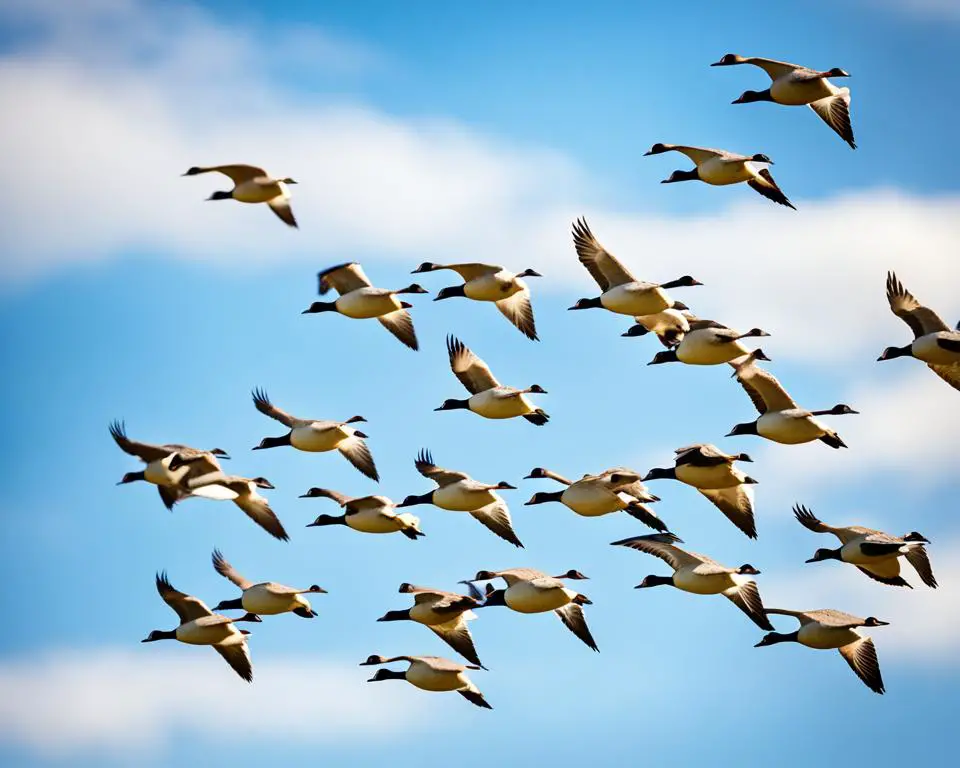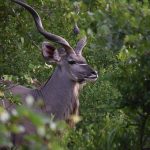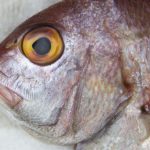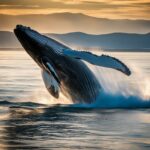When you step outside to the chorus of nature, have you ever paused to marvel at the intricate world of waterfowl? Specifically, geese are adorned with a tapestry of behaviors and traits that capture the curiosity of bird enthusiasts across the country. With our exploration of interesting geese facts and waterfowl information, you’ll discover a new layer of appreciation for these avian wonders. Whether you’re a seasoned ornithologist or newly feathering your nest in birdwatching, join us on a flight through the enchanting life of geese.
Ready to spread your wings and dive into the captivating existence of these creatures? Let’s embark on a journey through the world of geese, where every honk and feather unfolds a story steeped in the wild. Get ready to add a bevy of knowledge to your avian arsenal!
The Intense Bonding of Geese
Geese are not just birds of flight and fancy; they are also remarkable examples of intense animal bonding. The phenomenon of goose imprinting, where these birds form strong ties with the first moving stimulus they encounter after hatching, offers fascinating insights into the world of avian loyalty and companionship.
Imprinting on the First Suitable Moving Stimulus
As the dawn of their lives breaks, goslings exhibit a potent and unbreakable bond known as imprinting. With their first breaths, they fixate upon and follow the nearest suitable moving object. Surprisingly, the object of their unwavering affection need not be a biological parent – it can be a person, another animal, or even an animate shape. This unorthodox nurturing figure becomes the focus of their lives, leading them as though they were their natural parent.
Lifelong Dedication to Surrogate ‘Parents’
The paths of their early life determine their lifelong course. These goslings don’t shift their loyalty readily; their dedication to their surrogate ‘parents’ persists through life’s seasons. Such is the power of goose imprinting that, even as adults, these birds recall and recognize the relationships from their earliest days, an embodiment of true animal bonding.
Social Integration with Other Livestock
Yet the social capabilities of geese stretch beyond their primary attachments. Raised in the company of other livestock, geese display a remarkable ability to integrate and form livestock companionship. Whether sharing space with fowl or farm cattle, geese establish harmonious relations, adding layers to the social fabric of rural life.
Their social inclinations allow them to adapt to diverse bonds beyond their imprinting behaviors. These unique dynamics of geese, with their predisposition for lifelong attachments and their affinity for interspecies interactions, make them distinguished creatures of the animal kingdom.
Understanding the Language of Geese
As you become more attuned to the world of geese, you may begin to wonder about the vibrant murmurs and bold declarations heard within a gaggle. Moving beyond simple squawks and honks, the language of geese is a symphony of nuanced communication steeped in sophisticated avian terminology. Let’s dive into the lexicon of goose communication and the complex dynamics of gaggle interactions that convey more than what meets the ear.
Ganders and Goose Terminology
The vernacular of goose enthusiasts distinguishes between the sexes with specific terms: ‘goose’ refers exclusively to females, whereas ‘ganders’ denotes their male counterparts. This distinction is a fundamental aspect of avian terminology and provides insight into the roles each play within the community. Understanding these terms helps you to navigate the realm of goose communication more fluently and appreciate the subtleties of their social structure.
Communication in the Formation of a ‘Gaggle’
On land or water, geese congregate in groups known as gaggles, a setting where communication unfolds with vigor. In these gaggles, each member plays a pivotal role, and the intricate layers of their interactions are guided by a set of understood behaviors and vocal cues. This cohesion exemplifies gaggle dynamics, ensuring the collective operates efficiently, whether it’s foraging, migrating, or simply resting.
Below is a classification of various vocalizations you may hear in a gaggle:
| Sound | Meaning | Context |
|---|---|---|
| Honks | General communication | Regular interactions within the gaggle |
| Hisses | Aggression or defense | When threatened or protecting territory |
| Murmurs | Contentment, close contact | Bonding moments between mates or parent-offspring |
| Grumbles | Displeasure or warning | Indicating dissatisfaction or alerting to danger |
Beyond vocalizations, non-verbal cues such as body language and feather ruffling also play an integral part in conveying messages within a gaggle. Whether it’s a head bobbing to signal it’s time to take flight or wing flaps to display dominance, each gesture contributes to the diverse lexicon of goose communication.
Such complexity illustrates why the study of goose behavior, specifically gaggle dynamics and communication, captivates birdwatchers and researchers alike. As you observe these communal birds, take note of the interactions and expressions. You’ll soon realize that every honk, murmur, and ruffle is part of an elaborate dialogue that ensures the gaggle’s longevity and cohesion.
The Dietary Choices of Geese
Delving into the world of waterfowl, you’ll find that geese have evolved with a diet as dynamic as the environments they inhabit. Understanding what comprises the geese diet offers insightful perspectives on their adaptability and survival tactics.
Nuts, Seeds, and Plant Diets
Similar to human herbivores, geese enjoy a banquet of nature’s offerings, which includes a variety of seeds, nuts, and opulent greenery. Their dietary selection plays a monumental role in their overall health and ability to thrive across seasons.
- Seeds: Integral for nutrition, particularly during the colder months.
- Nuts: A robust source of energy, although consumed less frequently due to availability.
- Grasses and Plants: The staples of a goose’s diet, abundant and critical for sustenance.
- Berries: A seasonal delight offering a burst of energy and vitamins.
Foraging Habits and Preferences
As you observe these majestic birds, notice the strategic foraging behavior that geese exhibit in their quest for food. Their foraging patterns are not random; they are evidence of complex behavior driven by instinct and necessity.
| Foraging Habit | Preferred Habitat | Primary Food Source |
|---|---|---|
| Grass Pecking | Open Fields, Parks | Grass, Clover |
| Water Dabbling | Lakes, Ponds | Aquatic Plants, Algae |
| Ground Searching | Woodlands, Meadows | Insects, Small Invertebrates |
| Field Foraging | Agricultural Lands | Grains, Crop Residue |
Wading through shallow water or pacing the fields, geese are consistently on the lookout for nourishment. Remarkably, aquatic plants serve as a noteworthy component of their diet, particularly when they linger near water bodies.
As admirers or stewards of these creatures, it’s vital to comprehend the connection between their dietary choices and habitat preferences. So, next time you’re near a lake or field, take a moment to observe the foraging behavior of geese. It’s not just a meal; it’s a masterful display of instinct and survival beautifully choreographed by nature itself.
The V Formation Mystery
Have you ever looked up to the sky and marveled at the geese as they traverse great distances in their iconic V formation? This natural phenomenon isn’t just for show; it’s a sophisticated example of flight aerodynamics and energy conservation at play. By observing these birds, you can glean insights into nature’s finely-tuned strategies for survival and efficiency.
Aerodynamics of Geese in Flight
Science shows us that the V formation is more than an enchanting aerial pattern—it’s a critical energy conservation technique. As geese flap their wings in flight, they create upward air currents. Each goose, strategically positioned in the ‘V’, catches these currents from the bird ahead, effectively riding the updraft and reducing wind resistance. This aerodynamic trick enables the flock to fly longer distances with less effort, conserving valuable energy reserves.
Lead Rotation and Energy Efficiency
The lead goose in the V formation bears the brunt of the air resistance, working the hardest and using more energy. Yet, geese have a communal strategy to combat fatigue; they take turns. When the leader tires, it rotates back into the formation, allowing another goose to take the helm. This lead rotation is a profound display of teamwork, ensuring that all receive rest and maintain the overall energy efficiency of the flock.
The next time you watch geese fly overhead in a precise ‘V’, know you’re witnessing a remarkable and complex interaction of flight aerodynamics and energy conservation—another beautiful secret unveiled in the natural world around you.
Geese: Symbols of Loyalty and Protection
The life of geese offers a glimpse into the strength of avian relationships and their innate instinct to protect. Not simply birds that grace our skies, geese are emblematic of goose loyalty and have fascinating mating behaviors that resonate deeply with notions of love and fidelity. Through their actions, we can observe gestures akin to human expressions of commitment and avian protection.
Mating for Life
In the realm of feathered creatures, few display the devoted coupledom of geese. These birds choose a partner and engage in a life-long monogamous bond that is both endearing and remarkable. The rituals that precede this pairing—often elaborate dances and synchronized calls—serve as a testament to their deliberate selection process. Once united, these couples remain together each season, exemplifying a steadfast dedication that’s rare in the animal kingdom.
Reactions to Loss: Mourning Behaviors
Perhaps one of the most heart-rending aspects of goose behavior is their reaction to loss. Displaying an emotional depth often attributed solely to mankind, geese show signs of mourning when they face the passing of a mate or the destruction of their eggs. The surviving partner may emit forlorn calls, showcasing a solemn respect and cherishing of the bond they once shared. It is in these moments that the protective nature of these creatures shines through; a poignant reminder that grief transcends species barriers.
Their capacity for emotional response extends further, as geese may stand by their fallen partner’s side, embodying a vigil that conveys their agony and loyalty. This compelling behavior underscores their place as avian symbols of endearment and guardianship over their kin. In contemplating the lives of geese, one cannot help but be moved by the profound and enduring connections they form.
Geese as Incredibly Visual Creatures
While enjoying the graceful flight of geese across the sky, you might marvel at how effortlessly they navigate. This is largely attributed to their extraordinary goose visual capabilities, which allow them to perceive the world in ways humans cannot even imagine.

Their ability to see fine details from far distances significantly surpasses human eyesight, granting them the skill to spot predators or food sources while flying high above the earth. Nature has equipped geese with a sophisticated visual system, enabling them to perform remarkable feats of navigation and survival.
Sensitivity to Fine Detail and UV Light
Geese aren’t just good at seeing the big picture; their sharp eyes are tuned to distinguish the subtleties within their environment. This includes an enhanced perception of UV light, a spectrum invisible to human eyes. Have you ever wondered how geese spot food or flock mates in complex natural habitats? It is this unique aspect of their bird eyesight that allows them to detect variations in plumage and the environment that other animals simply can’t see.
Your understanding of the avian world enriches when you consider that what appears as normal visual scenes for us may be riddled with glowing signs and markers for these feathered navigators. Their enhanced eyesight is not just about survival—it embodies an intricate connection with, and adaptation to, the world around them.
So next time you spot a skein of geese charting their way across the horizon, take a moment to appreciate the intricate visual systems that support their journey, reminding us that there is so much more to bird life than what meets the human eye.
The Independence of Goose Vision
Witnessing a flock of geese might bring a peaceful sense of order and simplicity, yet, beneath their serene exterior lies a highly sophisticated visual system. Notably, geese possess the remarkable ability to control each eye individually, a trait suggesting a depth of avian vision far beyond our understanding. Imagine the possibilities afforded by this independent eye control—geese can monitor their surroundings while engaging in various activities, always prepared to respond to the flutter of danger or the promise of sustenance.
Eye Control and Half-Brain Sleeping
Indeed, the exceptional vision of geese extends into their sleeping patterns. Have you ever pondered how geese maintain their safety while at rest? These vigilant creatures have mastered the art of sleeping with one eye open, quite literally. With an innate ability to shut down half of their brain, geese can rest while simultaneously keeping watch over their environment. This phenomenon is known as unihemispheric slow-wave sleep, and it allows them to recharge without becoming vulnerable prey.
To appreciate how geese utilize their unique vision and sleeping habits, let’s consider the following behaviors:
| Behavior | Function | Benefit |
|---|---|---|
| Independent Eye Movement | Monitor different areas simultaneously | Increased awareness and threat detection |
| Unihemispheric Slow-Wave Sleep | One brain hemisphere asleep, one awake | Ability to rest while remaining vigilant |
| Depth Perception | Judges distances accurately | Efficient foraging and obstacle avoidance |
| UV Light Perception | See patterns and predators indiscernible to humans | Advanced navigation and food detection |
This independent eye control not only underscores their adaptability to various habitats but also serves as another example of the intricate links between form and function in the animal kingdom. So next time you see geese at rest near water or on land, remember the unseen sentinel—every open eye is a guard, and every closed eye is a resting gatekeeper, poised in a perfect balance of rest and readiness.
Sibling Recognition in Goslings
As you observe the charming interactions within bustling geese families, a captivating aspect of their behavior emerges—the innate ability of goslings to recognize each other. Gosling recognition plays a vital role in the flock’s social dynamics, enabling these feathered youths to forge strong familial connections. This recognition is not just about identifying kin; it’s an intricate dance of sibling differentiation that helps maintain harmony and order within their communities.
The Ability to Differentiate Family Members
From their first moments à la duck pond, goslings demonstrate a remarkable capacity for distinguishing between their siblings, a trait crucial for their successful integration into the complex and often hierarchical social structure of geese families. This skill allows them to interact appropriately with various members of the flock and engage in group activities, such as feeding or protective maneuvers against potential threats.
Let’s delve into the specifics of how these endearing creatures manage to achieve such precision in identification among a gaggle where visual similarities abound:
| Recognition Cue | Description | Importance |
|---|---|---|
| Vocalizations | Unique sounds goslings make that are identifiable by siblings. | Facilitates communication and bonding within the family unit. |
| Physical Markings | Subtle differences in feathers, size, and color patterns. | Enables visual recognition among closely resembling siblings. |
| Behavior | Distinctive movements or habits displayed by individual goslings. | Helps goslings identify and empathize with each other’s actions. |
| Location and Proximity | Tendency to stay close to certain siblings during the early stages of life. | Strengthens sibling bonds and collaboration for survival. |
Understanding the gosling recognition system is a fascinating reminder of the complexities hiding within the seemingly simple lives of geese. It’s a testament to the evolutionary winners in nature’s lottery, showcasing behaviors that deeply resonate with our own human experiences of family and society. So, next time you see a group of goslings trailing their mother in perfect symmetry, remember, there’s a world of recognition and differentiation at play, as essential to them as our own family ties are to us.
Emotional Intuition among Geese
Within the web of social dynamics that defines a flock, geese demonstrate striking emotional intelligence, intricately linked with their physiological responses. This unique connection emerges distinctly during tense moments of avian conflict, offering an unparalleled glimpse into the empathetic world of geese. So let’s delve deeper and explore how these birds’ hearts resonate with the trials and tribulations of their feathered company.
Heart Rate Changes During Social Interactions
Have you ever felt your pulse quicken when a friend faces adversity? Geese, too, experience a similar surge in heart rate, a clear sign of their engagement and concern during avian skirmishes. These heart rate spikes are not merely incidental; they signify the profound goose emotional response to the stress and potential danger confronting their companions or family. To truly appreciate this, one must imagine the stillness of a pond shattered by the ripples of conflict and the consequential quickening of heartbeats within the flock.
Researchers employing heart rate monitoring devices have documented these changes, painting a picture of the strong emotional bonds that exist among these birds. When a goose observes a skirmish, a wave of physiological change undulates through its body — a visceral reaction showcasing just how attuned these animals are to one another’s experiences.
| Interaction | Emotional Response | Change in Heart Rate |
|---|---|---|
| Observing Companion Conflict | Increase in Stress and Concern | Elevated |
| Nurturing Offspring | Affection and Attentiveness | Steady, Sometimes Lowered |
| Social Bonding Activities | Contentment and Peace | Lowered, Relaxed |
| Separation from Flock | Anxiety and Distress | Significantly Elevated |
The marvel of such heart rate monitoring is not just in the data, but in what it reveals about the intricate tapestry of goose emotional response. It’s clear that these birds are not just passive participants in their environment but are deeply woven into the social fabric of their community. As you watch a group of geese serenely glide across a body of water, remember that beneath the surface lies a rich, emotive world, pulsating in sync with the very beat of their hearts.
The Sensitivity of a Goose’s Bill
When you consider the many sensory abilities of geese, one particularly fascinating aspect is the acute sensitivity of their bills. This distinctive feature plays a pivotal role in their interaction with the environment, akin to the sensory experience of our fingertips touching the fabric of our world. Let’s delve into the intriguing sensory world of a goose’s bill and uncover how it shapes their experience.
Touch Receptors and Sensory Perception
Just as our hands are laden with receptors that allow us to feel the slightest breeze or the texture of a leaf, a goose’s bill is similarly equipped with touch receptors. These receptors are incredibly sensitive and vital to a goose’s interaction with its surroundings, from foraging for food to caring for their young. Imagine operating in a world where your mouth was as sensitive as your hands – that’s the reality for these birds, highlighting the remarkable nature of goose sensory abilities.

These sophisticated sensory receptors endow geese with the ability to detect even the most subtle changes in their environment. A goose can discern varying textures and temperatures, which is essential for navigating through different landscapes to find food, or for delicately turning their eggs during nesting.
| Bill Part | Role in Sensory Perception | Function in Goose’s Daily Life |
|---|---|---|
| Tip of Bill | High concentration of touch receptors. | Detecting food types and potential threats. |
| Sides of Bill | Texture analysis. | Sorting through dietary choices, from grains to grasses. |
| Base of Bill | Pressure and vibration sensitivity. | Handling and rotating eggs in the nest. |
Understanding the bill sensitivity of geese provides a deeper appreciation for the impressive adaptability and successful survival of these creatures. Whether they are foraging among the reeds or preening their feathers, geese continue to showcase the intricacy of avian life, connected to their world through a bill that senses, protects, and nurtures.
Gaze Following and Social Learning in Geese
Imagine a flock of geese grazing peacefully in a field. Suddenly, one bird lifts its head, fixating on a distant point. Almost like magic, the entire flock seems to follow suit, each goose turning to view the same horizon. This isn’t coincidence—it’s gaze following behavior, a staple of geese social awareness that plays a critical role in their survival.
Using Sight for Predator Awareness
When it comes to staying safe in the wild, geese have a shared approach—they keep an eye on each other. Through gaze following, geese can alert the flock to the presence of potential predators, tapping into a form of non-verbal communication that heightens their predator detection capabilities. This behavior is not learned in isolation; rather, it’s honed through social learning as goslings observe and mimic older, more experienced birds.
By understanding the intent behind another goose’s gaze, individuals can interpret crucial information about their environment, identifying whether to flee or continue foraging. This level of social coordination and awareness is essential for the survival of the species, ensuring that geese can thrive in environments where danger might lurk just beyond the next hedge.
Witness this behavior for yourself—the next time geese are in your vicinity, pay attention to their interaction, and you’ll see a display of collective alertness that’s hard to miss.
The table below illustrates typical scenarios where gaze following can influence the behavior of geese:
| Scenario | Typical Goose Response | Significance |
|---|---|---|
| Goose spots a potential threat | Flock becomes alert and prepares to escape | Enhances survival through increased vigilance |
| Goose gazes at a food source | Flock gravitates towards the area | Aids in resource acquisition, leading to better nourishment |
| Distraction in the environment | Flock investigates or avoids, depending on perceived risk | Maintains the flock’s safety and cohesion through collective decision-making |
Through gaze following, geese demonstrate an intricate balance between individual alertness and community response. They embody the essence of social animals, reliant not just on their physical strengths but also on their shared social cues. As guardians of their flock, each goose contributes to the collective awareness that defines their survival, a true testament to their social intelligence and adaptability.
The Surprising Truth About Gosling Communication
Even before breaking free from the confines of their shells, goslings engage in a crucial early form of gosling communication known as egg vocalizations. This tender dialogue between the unborn goslings and their patient parents sets the foundation for robust parent-offspring relationships and is critical to the goslings’ survival and development.
Imagine the stirring scene as a mother goose attentively listens to the soft peeps and murmurs emanating from her eggs; these egg vocalizations are not random noise but a meaningful exchange paving the way for a tight-knit bond. This extraordinary capacity for communication highlights the complexity of these creatures, often underestimated in the avian world.
You might wonder how these prenatal conversations manifest and their impacts on the goslings as they grow. Let’s unravel the essence of these communications and their significance:
From the very start, goslings are not silent passengers waiting for life after hatching; they are active participants, vocally expressing and solidifying ties that ensure care and protection the moment they emerge.
As the eggs pip and crack, the accumulated interactions come to fruition. Goslings that have partaken in these early communications are observed to be more socially adept and self-assured. Their ability to ‘speak’ before they can ‘see’ fosters early independence and enforces the survival ethos of a species sculpted by nature’s elements.
Consider the following table, which outlines the stages of gosling communication and the developmental benefits at each phase:
| Communication Stage | Developmental Significance | Outcome |
|---|---|---|
| Prenatal Egg Vocalizations | Initiation of parent-offspring bond | Enhanced recognition and post-hatch security |
| Post-hatch Peeping | Reinforcement of bonding; seeking warmth and safety | Strengthening of family ties and group cohesion |
| Adolescent Calls | Social integration with gaggle | Improved survival through group reliance and communication |
As the goslings grow, their communication skills broaden, allowing them to navigate their environment with increased confidence. Whether calling out to siblings, alerting their parents to perceived danger, or signaling their state of being, every sound goslings make serves as a milestone in their journey to becoming communicative and social beings.
Egg vocalizations, therefore, are not a mere curiosity but a robust mechanism that shapes the evolution of parent-offspring relationships. As you observe the wonder of geese nurturing their young, take a moment to listen closely—you’re witnessing the foundational conversations that have bound these fascinating creatures together through innumerable generations.
Exploring Goose Population Resurgence
Amidst the myriad of wildlife conservation narratives, the tale of the Canada goose stands tall as a soaring success. Once facing grave declines, proactive protective measures have helped orchestrate a remarkable comeback narrative for this species. Your walk through the park, accompanied by the honking of geese, now echoes the triumph of environmental efforts.
Canada Goose Conservation Success
Turn the pages of history back to the early 1900s, and you’d find the Canada goose population under siege from the twin perils of habitat loss and rampant hunting. Fast forward to today, and you witness a different reality—one where more than 5 million Canada geese thrive across North America. This resurgence is a testament to the power of committed wildlife conservation initiatives that have turned potential loss into a tale of renewal and hope.
Species and Subspecies Evolution
The plot thickens when we consider the differentiation in species and subspecies among these feathered inhabitants. In a curious twist of ornithological taxonomy, 2004 heralded the split of the Canada Goose into two distinct species—the Canada Goose, and its smaller counterpart, the Cackling Goose. This species differentiation reveals the nuanced adaptability of these creatures, painting a detailed picture of avian evolution right before our eyes.
The Canada Goose boasts seven recognized subspecies, each with characteristics tailor-made for survival. Highlighted among them is the giant Canada Goose, a behemoth of the bird world whose presumed extinction was debunked with a surprise re-emergence in Rochester, Minnesota in 1962. Their existence is a fitting emblem of nature’s tenacity and the fruits of conservation efforts to preserve ecological diversity.
The Aggressive Nature of Canada Geese
As you stroll through your local park or riverside path, you may encounter groups of Canada Geese, majestic and peaceful at a glance. But there’s an assertive side to these creatures, especially when they are guarding their territory or young. Understanding the Canada geese aggression patterns is crucial to safely coexisting with these birds during their nesting season.
Defensive Behaviors and Territorial Attitude
Canada Geese are not inherently aggressive, but they can exhibit assertive behaviors that can surprise those unfamiliar with their territorial defense strategies. When these birds feel a potential threat lurking near their brood or nest, their instinctual need to protect kicks in fiercely. The following are some defensive behaviors of Canada Geese:
| Behavior | Description | Purpose |
|---|---|---|
| Hissing | A clear vocal warning sign without any physical contact. | To ward off intruders before escalation. |
| Neck Stretching | Extending the neck with a lowered head and hissing or honking. | To appear larger and more threatening to dissuade approach. |
| Wing Spreading | Outstretching wings to full span, sometimes accompanied by charging. | To physically assert dominance over the area. |
| Charging | Moving forward towards the threat, sometimes with head bobbing. | As a last resort to make the intruder flee the area. |
While these behaviors can be intimidating, it’s important to remember that geese are primarily focused on nest protection and will typically only act aggressively if they perceive a direct threat to their offspring or habitat. If you find yourself the subject of a goose’s attention, it’s best to slowly back away and give the bird some space.
Moreover, it’s very enlightening to consider that the parental instincts driving such aggression in Canada Geese share a common thread with many wildlife species, including humans. The lengths to which geese will go for nest protection mirror the protective nature most parents feel for their own young.
In essence, the aggressive behavior of Canada Geese during the nesting season is a powerful reflection of nature’s intrinsic desire to preserve life. By understanding their motivations, you can enjoy these creatures from a respectful distance and minimize the chances of a feathery encounter turning foul.
The Feathering Complexity of Canada Geese
The Canada Goose is not only an iconic symbol of the wilderness but also a magnificent example of nature’s adaptability, particularly visible in its feathering complexity. Understanding the intricacies of their plumage reveals a wealth of information about how these birds survive and thrive in their aquatic environments.
Feather Count and Insulation
One of the most remarkable aspects of the Canada Goose’s biology is its dense feathering, which serves as a critical component of feather insulation. With an estimated count between 20,000 to 25,000 feathers, these geese have one of the most extensive feathering systems among birds. This impressive feather count plays a pivotal role in regulating their body temperature, especially considering their penchant for chilly waters. Moreover, the structure of these feathers, particularly the down, traps air close to the body, thereby ensuring that despite dipping into cold waters, the aquatic bird adaptation of the Canada Goose is second to none when it comes to staying warm.
The Molting Process
Unique to the life of these birds is their annual molting cycle, a phase wherein Canada Geese shed their old feathers to make way for new growth. This cycle is not merely a shedding of aesthetics but a renewal that is vital for flight and insulation. Contrary to what one might imagine, the flight feathers, or pinions, are lost all at once in a process known as simultaneous wing molting. This leaves the geese temporarily flightless, a vulnerable state that typically occurs in late summer. During this time, the birds stay closer to water sources for protection as they await the complete regrowth of these primary feathers.
The entire molting process reflects an evolutionary trait fine-tuned for survival, as it ensures that geese retain the optimum feather condition for insulation, buoyancy, and aerodynamics. So, as you observe these birds in their natural habitats, remember that their every feather is a testament to a grander survival strategy honed over eons. The Canada Goose’s feathering complexity is yet another example of nature’s ingenuity at work.
Conclusion
Embarking on this journey through the intricate world of geese has provided a wealth of ornithology insights that underscore the sophisticated nature of avian biology. These waterfowl, with their complex geese behavior, have demonstrated that they are not just background players in our ecosystems. Rather, they are dynamic creatures of interest—both to the avid ornithologist and the curious onlooker. The cooperative intricacies of their V formations, their astonishingly honed visual systems, and the rich tapestry of their social connections all serve to enrich our understanding of the natural world.
You now have a deeper appreciation for the intelligence and emotional depth these birds possess. From their impressive dietary adaptations that sustain them through the changing seasons to their steadfast commitment to their partners and offspring, geese embody the instinctual drive to thrive within their habitats. Their lives, intertwined with our own through urban expansion, continue to evolve, offering an ongoing narrative that fascinates and educates us about the resilience of wildlife.
Your newfound knowledge of geese is a testament to the ongoing story of life’s intricacies. As you observe these birds in their natural or adapted environments, take a moment to appreciate the subtle and overt roles they play. Cherish the beauty and grit of their existence and reflect on what their behaviors can teach us about adaptability, communication, and community. May your exploration into the world of geese behavior inspire a continued interest in the marvels of avian biology and encourage further discovery in the fascinating field of ornithology.










